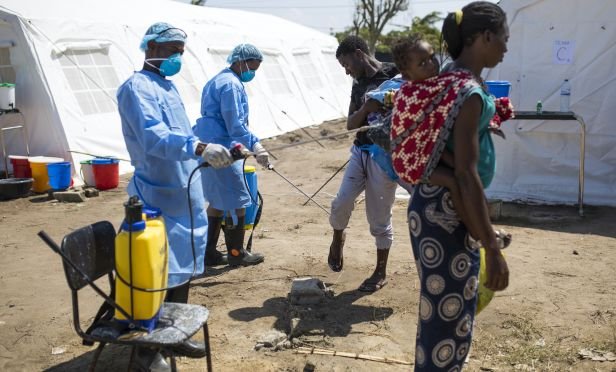 Medical staff disinfect a patient's feet outside emergency treatment tents at the Macurungo urban health center in Beira, Mozambique, on Friday, March 29, 2019. Cyclone Idai hit the Mozambican coast earlier this month, devastating the port city of Beira and killing at least 700 people in Mozambique, Zimbabwe and Malawi. (Photo: Guillem Sartorio/Bloomberg)
Medical staff disinfect a patient's feet outside emergency treatment tents at the Macurungo urban health center in Beira, Mozambique, on Friday, March 29, 2019. Cyclone Idai hit the Mozambican coast earlier this month, devastating the port city of Beira and killing at least 700 people in Mozambique, Zimbabwe and Malawi. (Photo: Guillem Sartorio/Bloomberg)
Updated 1:40 p.m. ET, April 2, 2019
Mozambique has confirmed more than 1,000 cases of cholera as an outbreak of the water-borne disease spreads following a tropical cyclone last month which has killed at least 518 people in the southeast African nation.
Recommended For You
Want to continue reading?
Become a Free PropertyCasualty360 Digital Reader
Your access to unlimited PropertyCasualty360 content isn’t changing.
Once you are an ALM digital member, you’ll receive:
- Breaking insurance news and analysis, on-site and via our newsletters and custom alerts
- Weekly Insurance Speak podcast featuring exclusive interviews with industry leaders
- Educational webcasts, white papers, and ebooks from industry thought leaders
- Critical converage of the employee benefits and financial advisory markets on our other ALM sites, BenefitsPRO and ThinkAdvisor
Already have an account? Sign In Now
© 2025 ALM Global, LLC, All Rights Reserved. Request academic re-use from www.copyright.com. All other uses, submit a request to [email protected]. For more information visit Asset & Logo Licensing.








